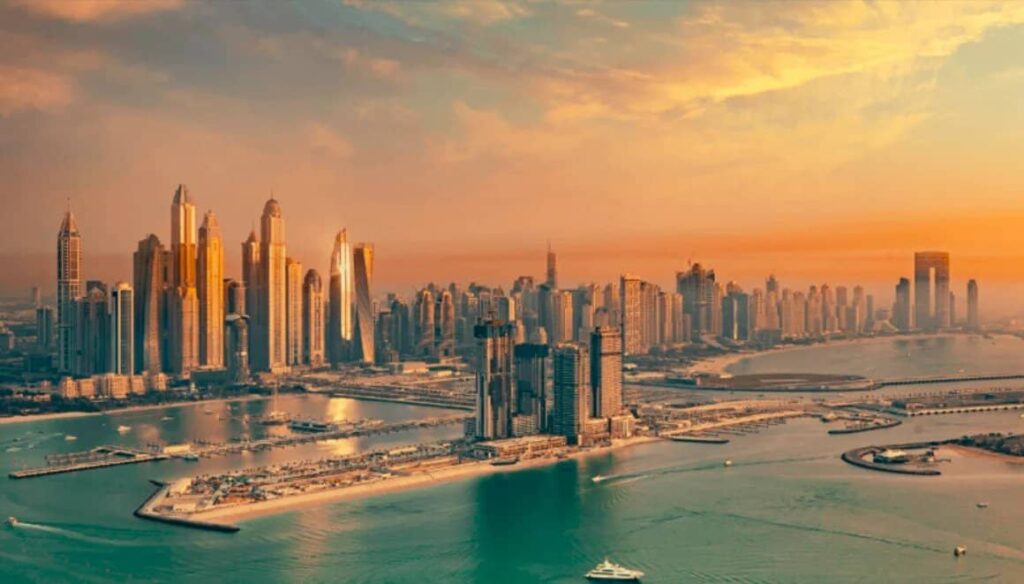The first half of this year saw more foreign visitors to Dubai than there were before the pandemic, due to a record-breaking performance by the emirate’s hospitality and tourism industry.
According to the most recent data from Dubai’s Department of Economy and Tourism (DET), international travel to Dubai, the Middle East’s commercial and recreational center, increased 20% year over year during the first half of the year.
The emirate said that 8.55 million foreign visitors arrived between January and June of this year, which is a higher number than the 8.36 million travelers that arrived in the first half of 2019 before the pandemic.
“The remarkable surge in international visitors witnessed by Dubai in the first half of 2023 further demonstrates its emergence as one of the brightest spots, not only in the worldwide tourism sector, but also the broader global economic landscape,” Sheikh Hamdan bin Mohammed, Crown Prince of Dubai, said.
The Dubai Economic Agenda 2033 intends to solidify the emirate’s status as one of the top three cities in the world, which is supported by the significant annual increase in foreign visitors.
“The record first-half performance reflects the successful and diverse citywide drive to market the destination, with the unwavering support of stakeholders and partners,” the media office said.
The UN and the World Trade Organization projected that foreign tourist arrivals would be between 80% and 95% of pre-pandemic levels this year, although data supports Dubai’s status as the destination with the fastest recovery.
“While the growth of international visitation reinforces Dubai’s rise as a major global tourism destination, it also signifies its status as a pivotal hub for trade, investment and enterprise,” Sheikh Hamdan, who is also the Chairman of The Executive Council of Dubai, said.
“The Dubai Economic Agenda D33 … has outlined an ambitious new trajectory for the city to further consolidate its status as one of the world’s top urban economies and tourism destinations. As a major pillar of Dubai’s economy, the tourism sector will continue to play a key role in realising its future aspirations.”
According to Emirates NBD, Dubai’s GDP expanded by 5% last year and is anticipated to rise by 3.5% in 2023, showing that it has successfully recovered from the pandemic-related downturn.
In the first nine months of 2022, the emirate’s GDP grew by 4.6% annually, according to data from the Dubai Statistics Centre.
Dubai’s non-oil private sector economy saw business activity reach a 10-month high in June, helped by a significant increase in sales and new orders as demand growth accelerated.
The S&P Global purchasing managers’ index for the emirate improved from 55.3 in May to 56.9 in June after being seasonally adjusted, which is the highest overall improvement in operational conditions in the non-oil sector since August 2022.
The annual passenger prediction for Dubai International Airport has also been raised for this year as the airport’s traffic reached 95.6% of its pre-pandemic levels in the first quarter of 2023.
In the first three months of the year, the airport handled 21.2 million passengers, an increase of 55.8% from the corresponding period in 2022.
According to the most recent data, western European tourists accounted for 20% of all international visitors and contributed the most to tourism arrivals, while the GCC and Mena areas contributed a combined 28% of the regional share.
South Asia provided 17% of the total, while Russia, the Central Asian States, and Eastern Europe as a whole made up 14%. According to the DET data, North and South East Asia supplied 8%, while the Americas, Africa, and Australasia contributed 7%, 4%, and 2%, respectively.
In the first half of this year, hotels in the emirate outperformed pre-pandemic norms in every aspect of hospitality, including occupancy, average day rate (ADR), revenue per available room (RevPAR), and duration of stay.
The average occupancy rate for hotels in Dubai was 78%, 2.2 percentage points higher than it was prior to the epidemic.
In comparison to the same period in 2019, the number of hotel businesses increased by 13% to 810, while room capacity increased by 26% to 148,689 total.
According to DET data, the ADR for the first half of the year was Dh534, higher than the ADR for the first half of 2019 at Dh444, and the RevPar for the first half of the year was Dh415, up 24% from the first half of the pre-pandemic era.
“This significant uplift in visitation, which surpasses both pre-pandemic levels and marks a record for Dubai’s tourism sector, is the result of a highly coordinated, sustainable, and robust strategy, that is underpinned by a strong execution mandate,” Helal Almarri, director general of DET, said.
“These results further add weight to the depth, scale, and resilience of Dubai’s tourism ecosystem, both domestically and across the world.”
